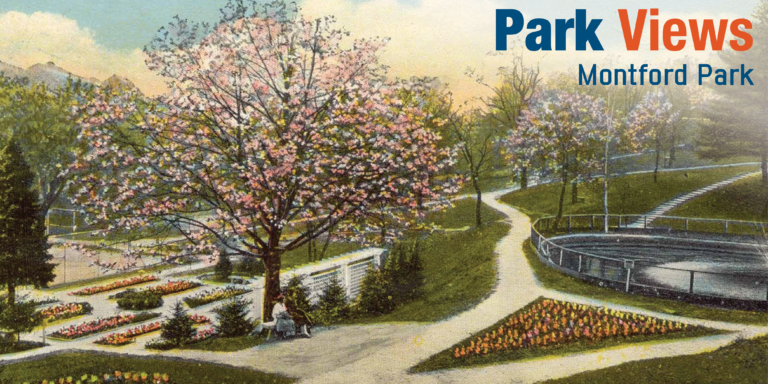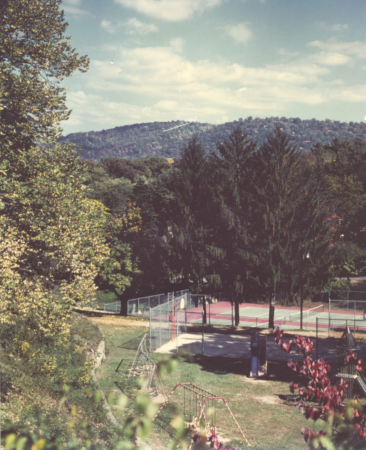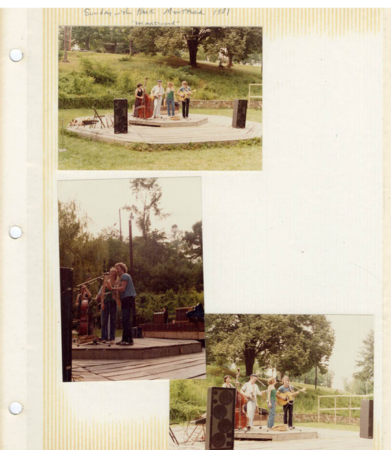This entry is part of Park Views, a weekly Asheville Parks & Recreation series that explores the history of the city’s public parks and community centers – and the mountain spirit that helped make them the unique spaces they are today. Read more from the series and follow APR on Facebook and Instagram for additional photos, upcoming events, and opportunities.
As Asheville’s oldest public park, Montford Park has seen more than 125 years of changes in a city that seems to always be moving one foot forward while keeping the other firmly planted in the past. While Ashevillians now enjoy multiple parks and modern recreation offerings, some say nothing beats an original.
Montford Before Montford
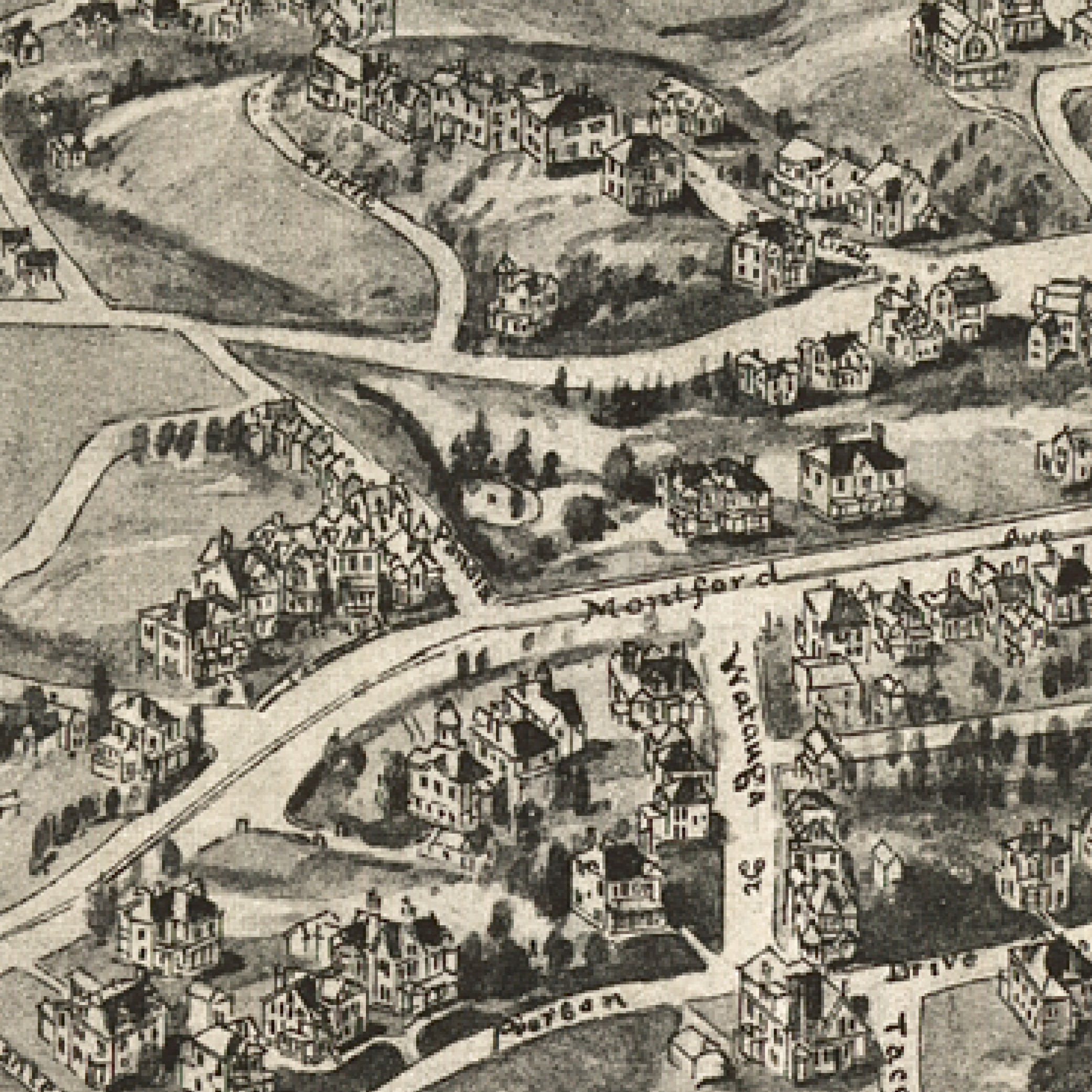 Modern day Buncombe County was originally inhabited by ᏣᎳᎩ, romanized as Anigiduwagi and more commonly known as the Cherokee (ᎠᏂᏴᏫᏯᎢ) people. After 1783, white settlers could apply for land grants and the Woodfin, Rankin, Patton, Courtland, Pearson, and other families colonized the area’s first permanent settlements and established large farms and plantations.
Modern day Buncombe County was originally inhabited by ᏣᎳᎩ, romanized as Anigiduwagi and more commonly known as the Cherokee (ᎠᏂᏴᏫᏯᎢ) people. After 1783, white settlers could apply for land grants and the Woodfin, Rankin, Patton, Courtland, Pearson, and other families colonized the area’s first permanent settlements and established large farms and plantations.
Asheville transformed itself from a livestock town of stockyards to a center of commerce, industry, and tourism with the railroad’s arrival in 1880. A new courthouse was completed in 1887 that included a third-story opera house and the city’s early developers began to take notice of the growing middle class.
Much of the land in Montford’s early plans came from Richmond Pearson (Richmond Hill Park’s namesake), one of those early developers. Montford was envisioned as a community spanning both sides of the French Broad River in initial discussions.
Prior to the railroad’s arrival, Pearson’s father left his heirs what they considered “unproductive” property. Once the railroad made travel to Asheville much easier, Pearson and other local businessmen bought up his siblings’ shares to develop Montford as a residential neighborhood away from the dust and noise of Court Square (now Pack Square). Including other land purchases, Montford was around 1,000 acres when lots were first offered for purchase.
The company they formed, Asheville Loan, Construction, and Improvement Company, sold its first lot in 1890 and went bankrupt in 1893. George Willis Pack purchased the company’s assets at a public auction on the courthouse steps – including the many undeveloped lots in Montford. Pack’s Montford investment became profitable and the neighborhood still retains much of its early 20th century charm with architecture that includes Shingle, Victorian, Greek Revival, Queen Anne, and Colonial Revival homes.
Asheville’s Biggest Benefactor
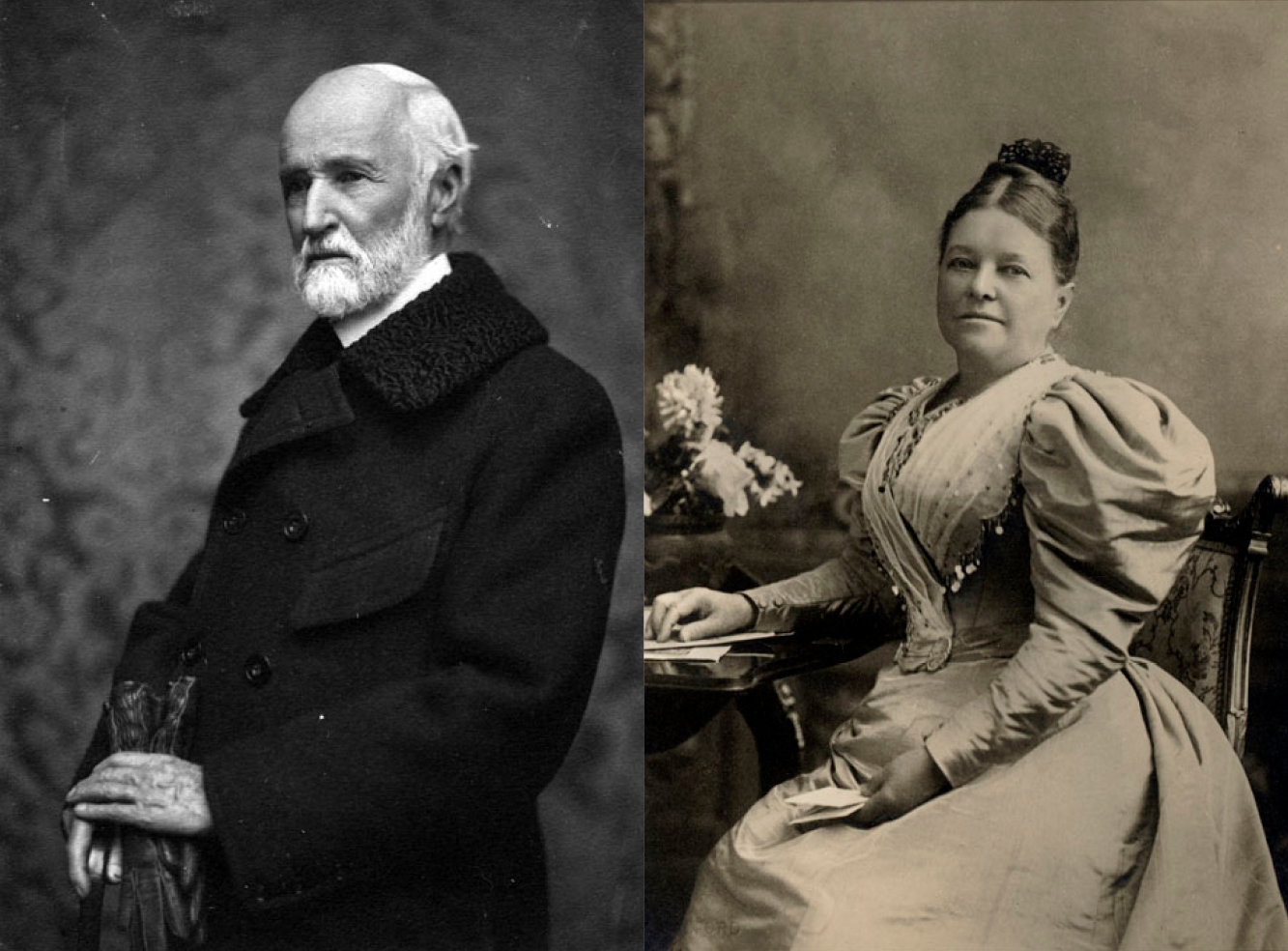 Pack found success in the Michigan lumber industry and moved to Asheville in 1884 for health reasons. One of Asheville’s most prominent philanthropists, he provided a building for the city’s first permanent library, donated land for the 1903 courthouse, helped create Mission Hospital, and donated land for Asheville’s first public parks.
Pack found success in the Michigan lumber industry and moved to Asheville in 1884 for health reasons. One of Asheville’s most prominent philanthropists, he provided a building for the city’s first permanent library, donated land for the 1903 courthouse, helped create Mission Hospital, and donated land for Asheville’s first public parks.
Montford did not join the city of Asheville until 1905, but city leaders accepted the deed for Montford Park on May 1, 1894. Shortly after, Pack deeded land for Magnolia and Aston parks to the people of Asheville.
Taking notice of children who swarmed Court Square, he and his wife Frances funded Asheville’s early public education system, building Sarah Garrison Kindergarten and covering 25 percent of the school’s operating costs and a teacher’s salary until his death. He also funded the salaries of two teachers at Beaumont Street School, the city’s first public school for Black students. The city renamed Court Square to Pack Square in his honor.
Asheville’s Fist Public Park
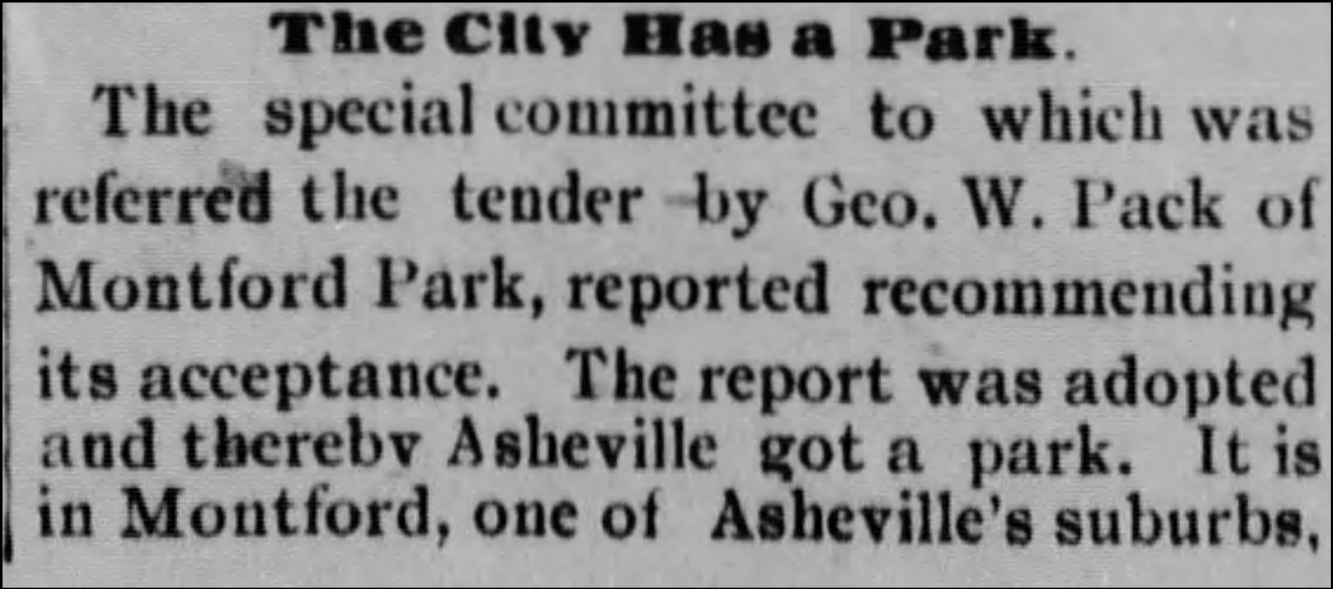 To celebrate the Buncombe County Centennial and bring needed attention to ample real estate still available in Montford, a makeshift cabin was erected in the area of Montford Park in the early 1890s. Newspaper articles mention a festival in front of the cabin that included visiting Cherokee tribal members and individuals dressed as homesteaders as part of centennial celebrations.
To celebrate the Buncombe County Centennial and bring needed attention to ample real estate still available in Montford, a makeshift cabin was erected in the area of Montford Park in the early 1890s. Newspaper articles mention a festival in front of the cabin that included visiting Cherokee tribal members and individuals dressed as homesteaders as part of centennial celebrations.
When the City of Asheville received the park, the cabin remained on site, so vines were trained to grow around the structure. According to The Asheville Weekly Citizen, the Park Commission turned slopes of red dirt into rolling green lawns, improved paths, and added flowers throughout. A pond in the upper section of the park became a wading pool, inspiring an 1899 Asheville Daily Citizen editorial about “anatomical exhibitions” of young men.
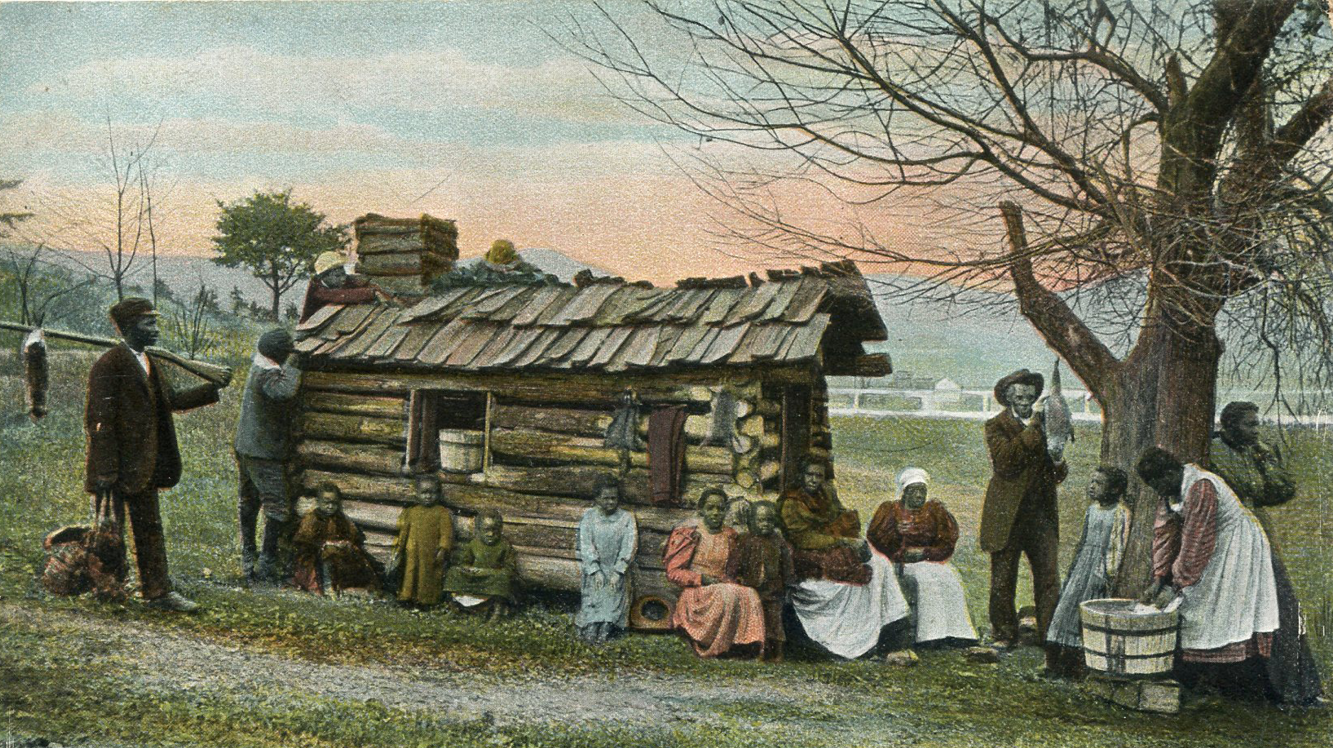 With 14,694 inhabitants in 1900, Asheville was the third largest city in North Carolina. Montford Park remained relatively unchanged until Asheville experienced an epic boom period of rapid growth in the 1920s with an unprecedented number of publicly-funded projects including Recreation Park, Asheville Municipal Golf Course, McCormick Field, Memorial Stadium, and several others.
With 14,694 inhabitants in 1900, Asheville was the third largest city in North Carolina. Montford Park remained relatively unchanged until Asheville experienced an epic boom period of rapid growth in the 1920s with an unprecedented number of publicly-funded projects including Recreation Park, Asheville Municipal Golf Course, McCormick Field, Memorial Stadium, and several others.
John Nolan’s 1922 city plan highlighted the inadequacy of Asheville’s public spaces which included the three parks Pack donated to the city and Malvern Hills, which recently opened. To improve Montford Park, city leaders approved major enhancements including a tennis court, three pergolas, four horseshoe courts, drinking fountains, restrooms, pergolas, and lawn swings that were added in 1924. A playground opened in the park shortly after.
Asheville did not experience a soft landing when its economic run ended. In 1930, local banks failed, saddling Asheville with $41 million in debt from municipal projects – more than the debts of Raleigh, Durham, Greensboro, and Winston Salem combined. To prevent further liabilities, no new debts could be incurred unless they were approved by a majority of voters in a referendum. For this reason, the park system remained largely stagnant for the following decades.
A symbolic bond burning ceremony was held at Asheville Civic Center on July 1, 1976, marking the final payment of debt accumulated in the 1920s and 1930s by Buncombe County and the City of Asheville.
Montford Park’s Next Era
Montford Park served as a summer playground site for much of the mid- to late-20th century when it was common for Asheville Parks & Recreation (APR) to offer supervised play, crafts, and activities while kids were on summer break. Eventually, summer playgrounds gave way to summer camps at community centers.
The Montford neighborhood experienced demographic changes in the 1960s as white residents relocated to Asheville’s suburbs and Black families moved in, displaced by urban renewal in Southside, East End, and East Riverside. Asheville Housing Authority opened Klondyke Homes just up Montford Avenue from the park in 1974, inviting new neighbors to experience its rolling lawns and open spaces.
Montford Park Players got its start – and its name – when it staged As You Like It in 1973, its very first performance. The troupe relocated to City-County 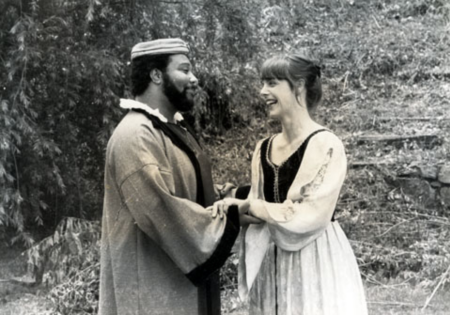 Plaza (now part of Pack Square Park) before finding a permanent home at Tempie Avery Montford Community Center’s Hazel Robinson Ampitheater in 1983. That residency continues today and it serves as North Carolina’s longest running Shakespeare theater company.
Plaza (now part of Pack Square Park) before finding a permanent home at Tempie Avery Montford Community Center’s Hazel Robinson Ampitheater in 1983. That residency continues today and it serves as North Carolina’s longest running Shakespeare theater company.
Historic Montford Park
In 1977, Montford Park and parts of Montford were added to the National Register of Historic Places. Asheville City Council designated the park and parts of the neighborhood a Local Historic District in 1981. Since that time, historic aspects and character of the park have been restored or preserved including landscaping, benches, and lighting.
Paved areas and accessible parking make the park more inviting today as park users stay active on tennis, pickleball, and basketball courts. Other visitors enjoy nature from park benches or blankets sprawled across the grass. As a park that opened during the first era of small parks offering areas of contemplation near residential areas, Montford Park embraces its storied history and its bright future.
Do you have photos or stories to share about Montford Park? Please send them to cbubenik@ashevillenc.gov so APR can be inspired by the past as we plan our future.
Photo and Image Credits
- Color photo-offset titled “Spring-time in Montford Park, Asheville, N. C.” dates between 1915-1930. Purchased on eBay in November, 2000. Courtesy of Buncombe County Special Collections, Pack Memorial Public Library, Asheville, North Carolina.
- A 1891 map shows the future location of Montford largely undeveloped. Montford incorporated as an independent town in 1893 before its real estate company went bankrupt. It was rescued a year later by George Willis Pack and annexed into Asheville in 1905. Montford Park appears cleared on this 1912 map. Fowler, T. M. & Charles Hart Litho. (1912) Asheville, Buncombe Co. N. Passaic, N.J. [Map] Retrieved from the Library of Congress, https://www.loc.gov/item/75694896.
- George Willis Pack was originally from New York, but found success in Michigan’s lumber industry. He and his wife moved to Asheville in 1884 for health reasons. Essentially retired, he had time and resources to contribute to what Asheville would soon become. Portrait of George Willis Pack (1831-1906) donated by R.J. Stokely. Portrait of Frances “Phoebe” Farman Pack (1834?-1917) photo copied by Edmondson (Cleveland, Ohio). Courtesy of Buncombe County Special Collections, Pack Memorial Public Library, Asheville, North Carolina.
- Newspaper clipping from April 28, 1894 edition of Asheville Citizen-Times. City of Asheville officials accepted the deed on May 1, 1894.
- A version of this photo appeared in the July 3, 1932 edition of Asheville Citizen-Times with the caption: “Asheville staged festivals back in the nineties. A group of [tribal members] were brought from the Cherokee reservation to participate in a festival here. In connection with their visit, this old-time settlers’ cabin, above, was erected near the present site of Montford Park. The cabin was a makeshift affair and was not habitable. Manson McIntire or Mance, an old [Black] man who was a respected and well known resident of the Asheville community, stands under the tree in the right of the picture. Others in the picture are his relatives and friends.”
The cabin was put up for the Buncombe County Centennial held in August 1892. An article in the August 18, 1892 edition of Asheville Daily Citizen reads: “The log cabin, which was a part of the Centennial parade last week, has been purchased from the builder, W.G. Corpening by George S. Powell and placed in Mondford Park.” Powell was the president of Asheville Construction, Loan, and Improvement Company and lived on 346 Montford Avenue, across from the park.
Colorized print published by H. Taylor Rogers printed by Raphael Tuck & Sons. Original black and white version published by J. H. Law. Courtesy of Buncombe County Special Collections, Pack Memorial Public Library, Asheville, North Carolina. - A view of the park from Montford Avenue shows tennis and basketball courts, lawn areas, and a small playground with swings and a rocket slide.
- Montford Park Players’ stage was built to cover the wading pool. This picture promotes a production of Othello. Othello (Rocky Fulp) is shown holding hands with a woman (Katie Kremer). Courtesy of Buncombe County Special Collections, Pack Memorial Public Library, Asheville, North Carolina.
- This page from the APR archives includes photos from a Sunday in the Park event in Montford Park from 1981. “Heartland” is the page’s title and likely the name of the band. Sunday in the Park rotated between parks throughout the city with music, dancing, face painting, and more.
- As part of a project to improve identification signs throughout the APR system, the 1970s-era Montford Park signs have been replaced. As the park dates to the 1890s, they were not original to its design and did not conform to Montford Area Historic District guidelines.
